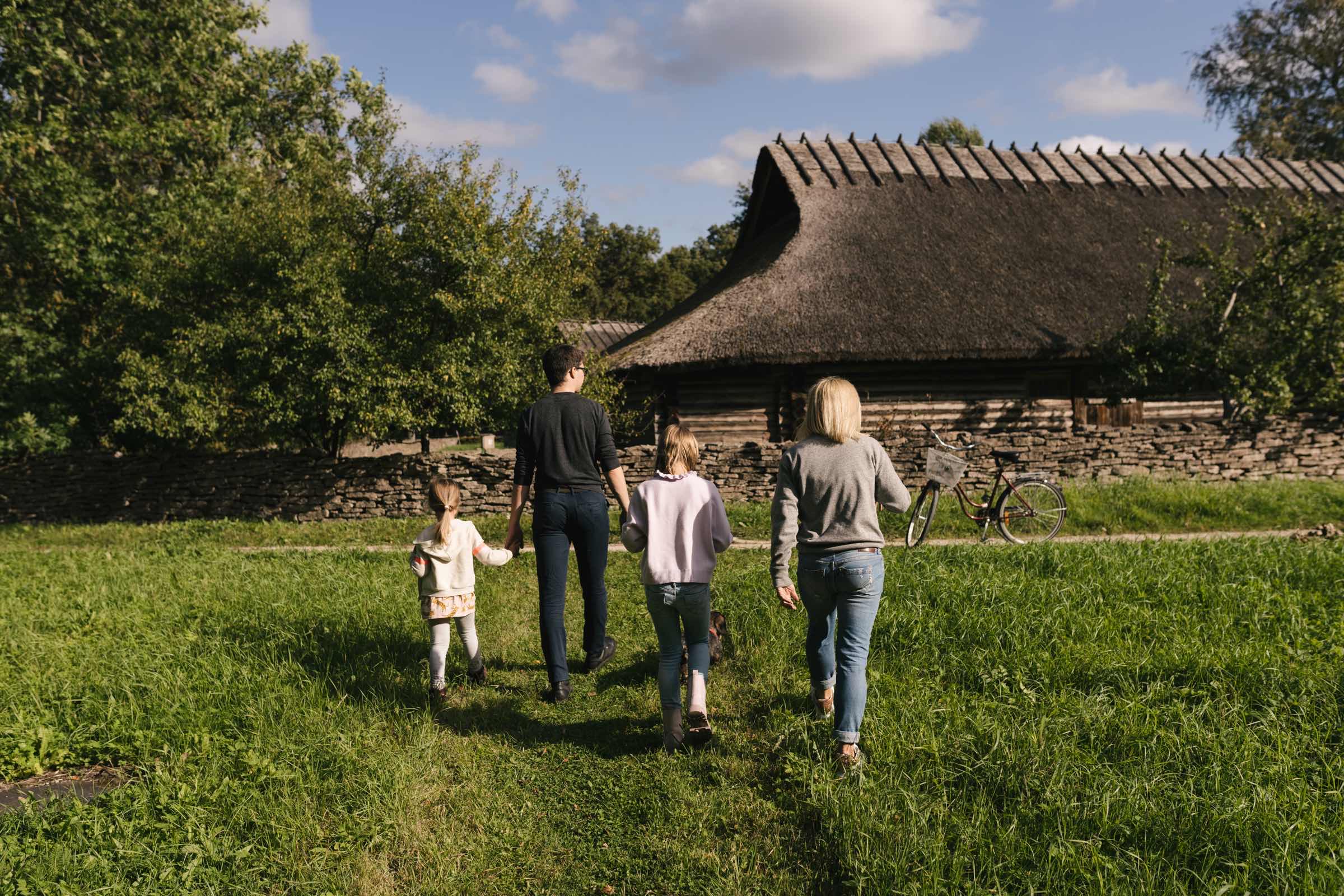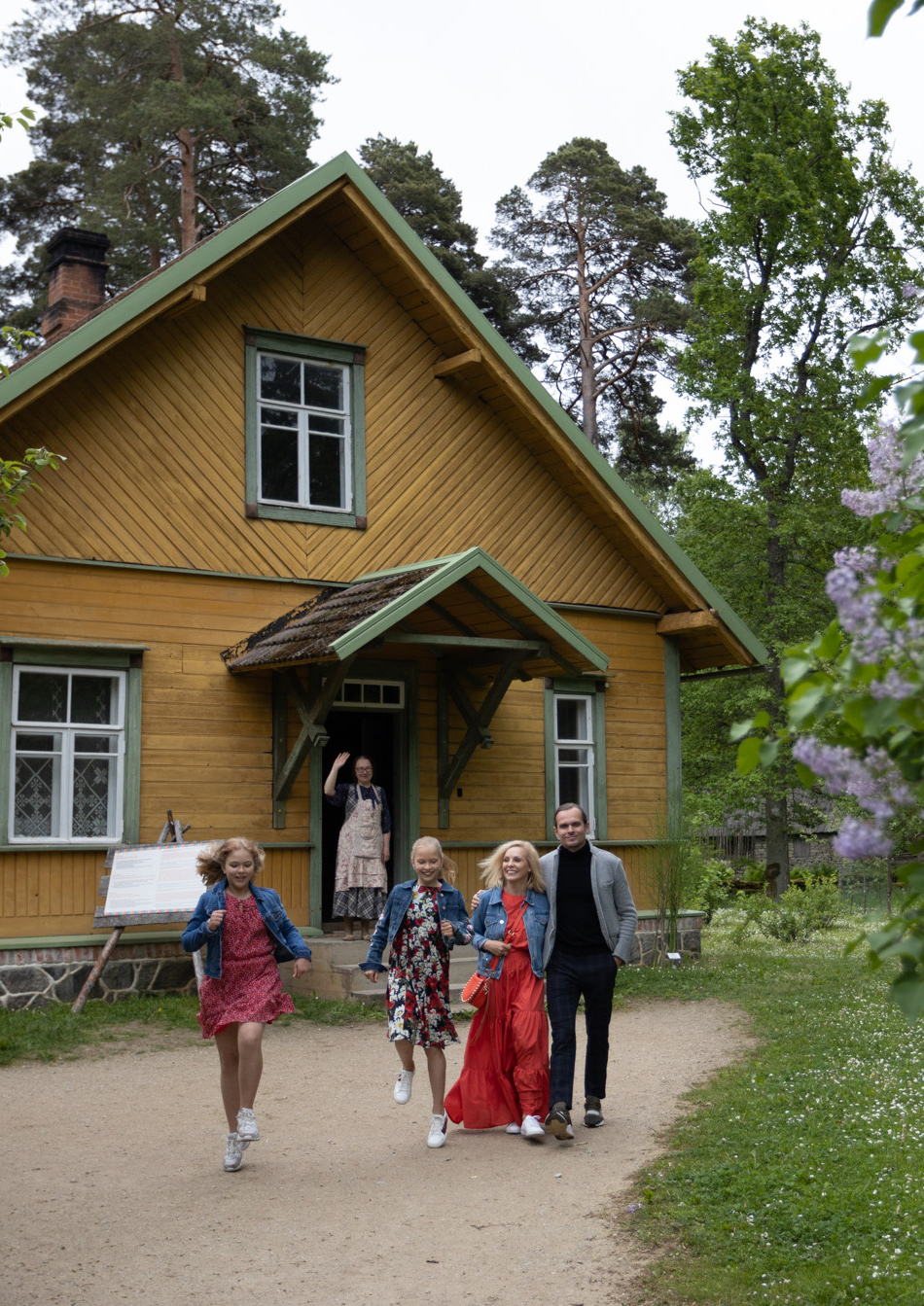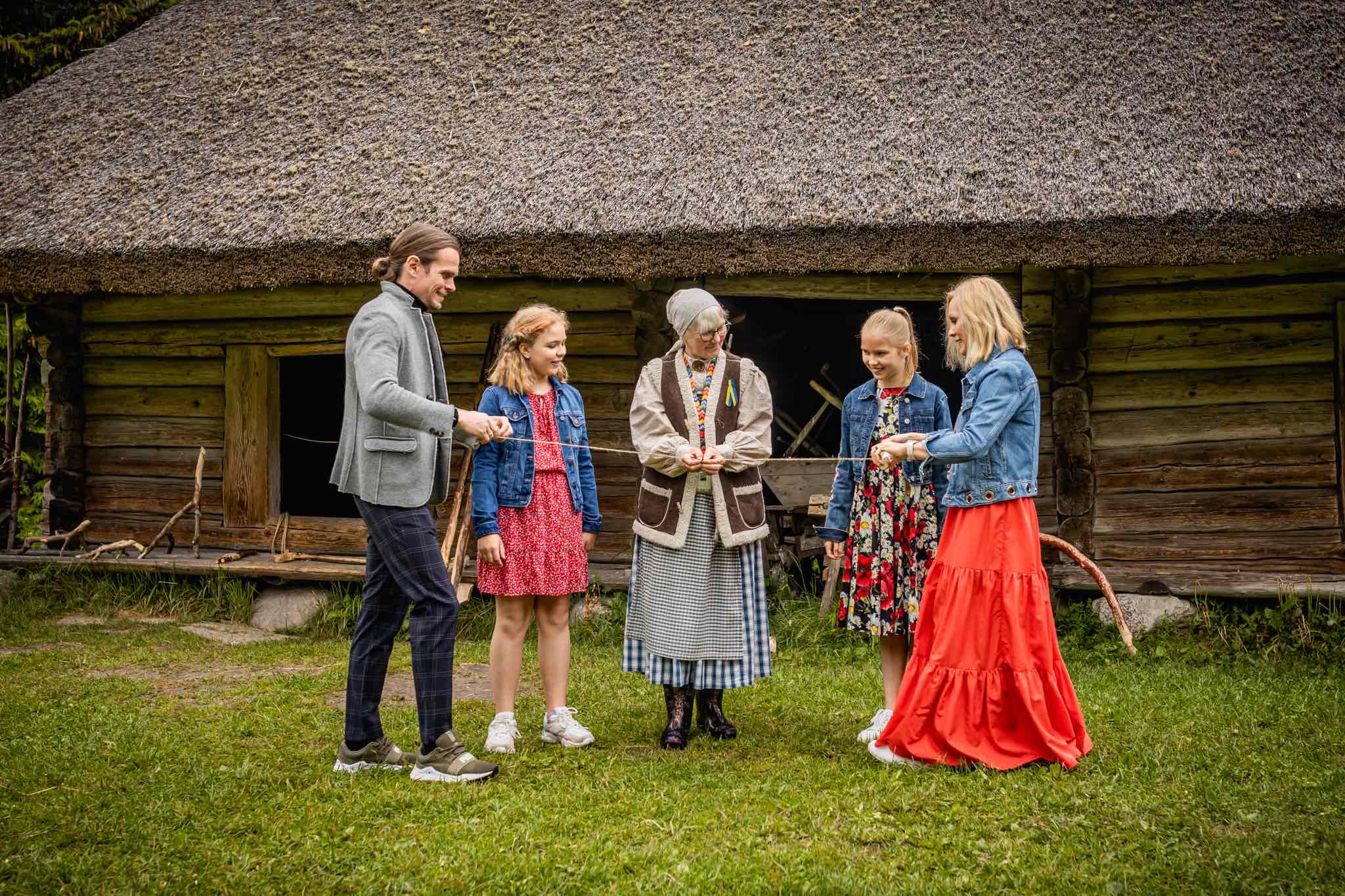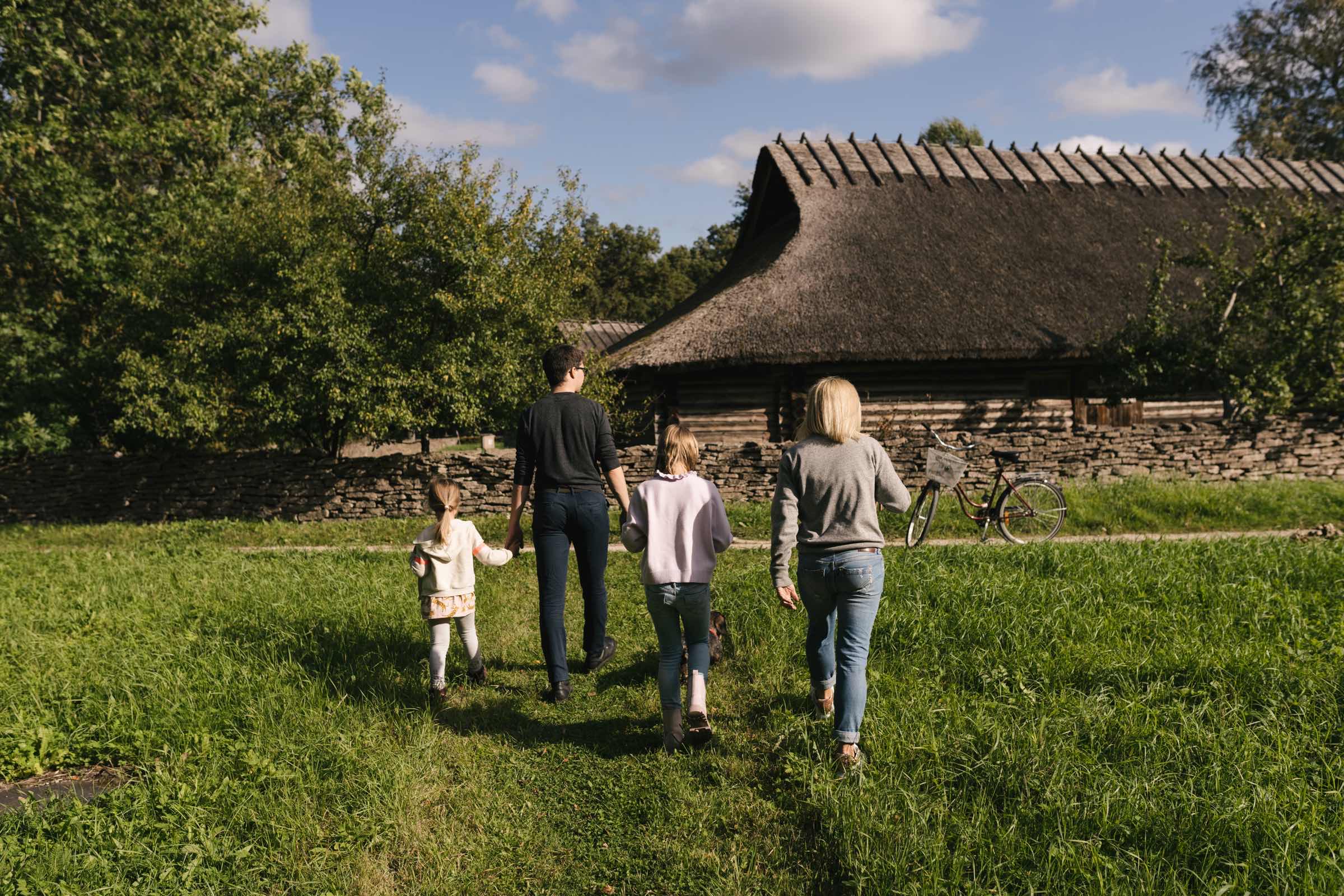Truly authentic and lively
The Open Air Museum, located in a forest by the sea, tells the story of how rural people in Estonia have lived. Historic dwellings, barns, and boathouses have been collected from all over the country and authentically restored. The past is brought to life by the farm women and men who tell stories and perform historical tasks and activities in which the visitors can participate. You can take a ride on a horse-drawn carriage or sleigh, or pet the sheep and goats. The tavern serves traditional Estonian dishes, and the village shop offers period items. The museum village also includes a Soviet-era kolkhoz apartment building that was awarded the 2021 prize for the best Estonian exposition. Starting in the summer of 2023, children will be able to wander along a herdsman's trail, which is designed like a modern adventure park.
Estonian National Museum, established in 1909 in Tartu, said in 1913 that establishing an open air museum was also its task. Estonian intellectuals got the idea from visiting the open air museums in Scandinavia and Finland (in Sweden the open air museum Skansen was established in 1891, in Norway in 1897, in Denmark in 1901, in Finland Seurasaari open air museum was established in 1909). The First World War hindered the museum from taking more serious steps. As from 1921, the resources of Estonian National Museum were spent on fitting out the Raadi Castle, and increasing economic difficulties did not enable to begin with the costly undertaking – the construction of the open air museum.



